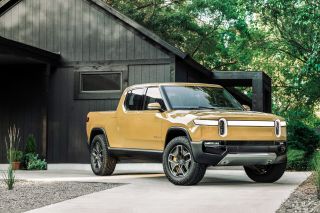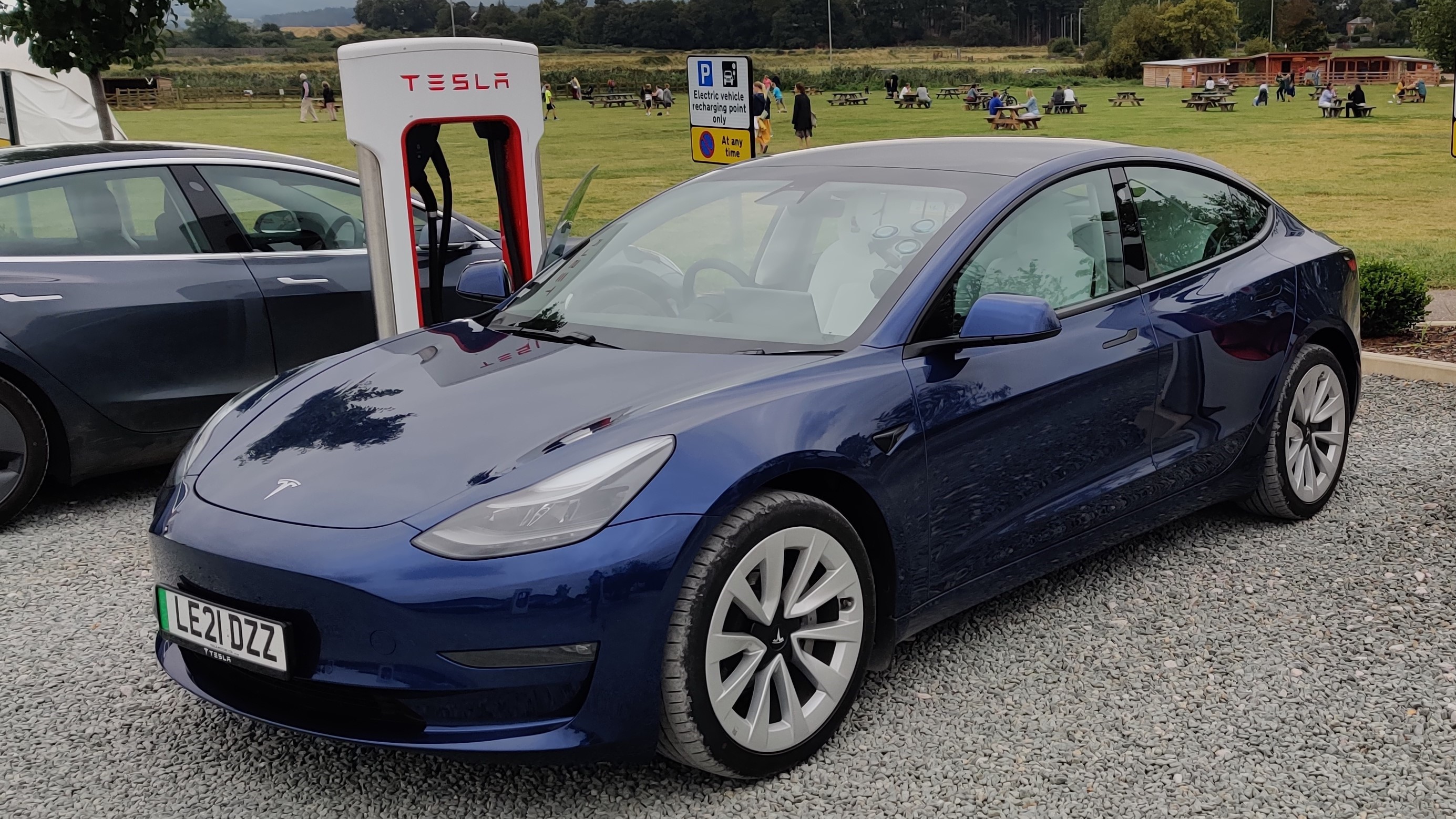Hey Rivian, exclusive charging points are a horrible idea — and even Tesla sees that
Hey Rivian, exclusive charging points are a horrible idea — and even Tesla sees that

Information technology won't be long before the offset Rivian R1T electric trucks start hitting the road, and in anticipation of that launch, the EV startup has been revealing certain key details about what's to come. And the Rivian Adventure Network (RAN) — its network of EV charging stations — is the latest to be showcased.
According to Rivian there will be more than 3,500 charging stations by the end of 2023 — beyond 600 sites. However, these chargers are going to be exclusive to Rivian drivers "initially." Bluntly that'due south the wrong attitude to take, and EV makers should be focusing on inclusivity rather than littering the state with chargers but a handful of drivers can apply.
- Everything you need to know about the Rivian R1T
- Here are the all-time electric cars you tin purchase correct now
- Plus: At $39k the Tesla Cybertruck volition exist Tesla's cheapest EV — how did that happen?
According to Rivian, the RAN will come with a number of cardinal advantages over other electrical car charging networks. Rivian vehicles volition have automatic charging, meaning you can plug in and non fiddle with any apps or payment screens to beginning topping up. The in-machine navigation can plot charging points forth your route, much like Tesla Superchargers.
RAN stations will also support up to 300kW DC charging speeds, though the R1T and R1S volition only be able to handle 200kW speeds. Nevertheless, it's also confirmed that these chargers volition initially be Rivian exclusives, meaning no other cars volition exist able to utilize them. This doesn't seem like it'll exist the example forever, since Rivian also confirms that it will offering special rates to Rivian drivers afterwards on.
Rivian will install around 10,000 Rivian 'Waypoints' by 2023, which will offer Air conditioning charging up to xi.5kW speeds. These points will apparently be available for all EV drivers from the get go. However, since they are not rapid chargers, they are only going to be able to offer a fraction of the charging power that the RAN DC chargers will have to offer.
Electrical cars demand open infrastructure
While I don't have an outcome with extra conveniences for Rivian owners, especially discounted rates, I practise take outcome with the fact the chargers are going to be exclusive for an unspecified period. It'south the absolute wrong manner to go about rolling out electric car charging infrastructure.
Despite all the advances in bombardment tech and electric car performance, some people do even so accept concerns about electric cars. Specially where range and recharging are concerned. The key style to alleviate those concerns, despite extending range as much as possible, is to ensure there are enough of places to recharge — and quickly.
Not but does that mean building more charging points, particularly in areas without much EV charging infrastructure, it means making certain people can actually plug into whichever ane they come up beyond.
In other words, we shouldn't be building any charging points that tin't be utilized by everyone. Fifty-fifty if there sure special perks are only bachelor for particular cars, at the very least every EV should be able to pull up, first rapid charging, and be on their way fuss-free.
And since Rivian uses the same CCS charger every bit nigh every other electric automobile, there'southward admittedly no reason why that shouldn't be possible from day i.
What about other charging networks?

While charging points often accept their own private restrictions for access, and how long you can stay to recharge, it doesn't matter what automobile yous really own. Just every bit long every bit you have the correct charging port for the available cables. Just turn up, plug in, and follow the instructions on the charging point (or in the companion app) to get going.
Merely then we have Tesla, which is probably the all-time instance of an sectional charging network, since Tesla Superchargers are only uniform with Tesla cars. In the U.S. that's bolstered past the fact Tesla uses a proprietary charging port rather than the CCS standard well-nigh other carmakers use.
But even if another car were able to plug in, which could happen in Europe where Tesla cars are equipped with CCS ports, software prevents the Supercharger from releasing any power.
In Tesla's case, the fact the Supercharger network maintains that level of exclusivity is somewhat understandable. Back when Tesla launched, long-range electric cars and rapid charging systems were basically unheard of.
So the company had to invest in the Supercharging network, and a new charging port capable of handling those speeds, or Teslas would have missed out on one of their fundamental selling points.
But that was almost ten years ago when electric cars were still a novelty. These days there are countless dissimilar EV models on the roads, and they all need to be able to charge up somewhere. The real question isn't why Tesla Superchargers are sectional, simply why they're still exclusive — especially in Europe where Tesla uses the same CCS charging standard as everyone else.
Times are changing
But that is manifestly changing, according to Elon Musk. Spurred on by the prospect of government incentives in Norway, Tesla volition apparently start letting the offset non-Teslas apply the Supercharger network earlier the terminate of the yr.
According to Musk that will eventually ringlet out to every country Superchargers are available, and volition work in a similar way to other third party charging networks — i.e. with payment and charging sessions confirms in the Tesla app.
If feel this is the obvious right affair to practice. If electric cars are going to be ubiquitous, drivers are going to demand to take advantage of every charging station. And that goes both ways.
In the aforementioned way that non-Teslas should be able to use the Supercharger network, Teslas in the U.S. should be able to plug into other charging stations — ideally without needing expensive adapters to facilitate it.
Later on all that's how information technology works for gas stations, which have been going pretty well for decades. And if electrical car makers really want a shine transition from gas to electrical, they need to practice everything they can to make the recharge experience equally seamless and user-friendly as filling up a gas tank.
With all that in mind, it's a footstep backwards for someone like Rivian to come in and not offering more inclusive rapid charging options. Having the AC Waypoints on offer is a overnice thought, but the speeds on offer aren't much use if yous demand a serious top-up. Let'south just promise Rivian figures that out and decided to cease exclusivity earlier that forecasted.
- More than: Rivian R1T vs Tesla Cybertruck: Which electric truck is right for you?
Source: https://www.tomsguide.com/opinion/hey-rivian-exclusive-charging-points-are-a-horrible-idea-and-even-tesla-sees-that
Posted by: leewhitis.blogspot.com


0 Response to "Hey Rivian, exclusive charging points are a horrible idea — and even Tesla sees that"
Post a Comment